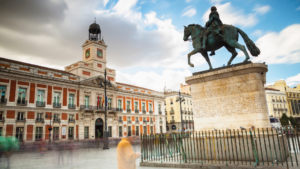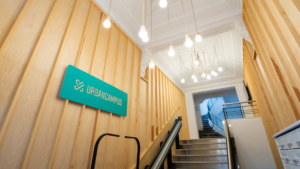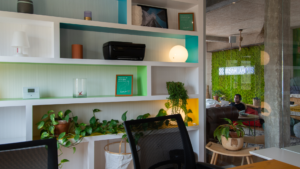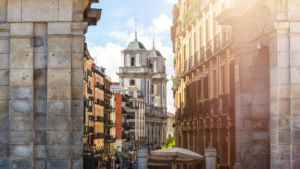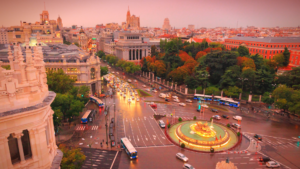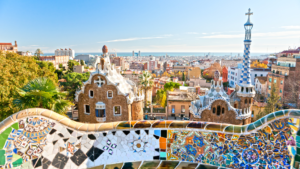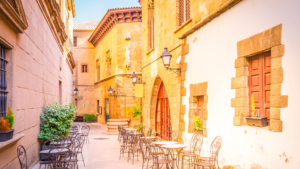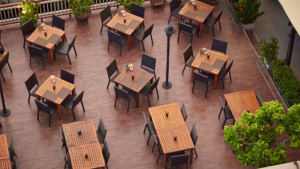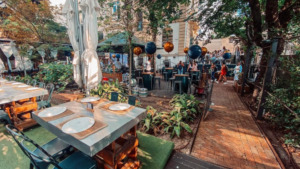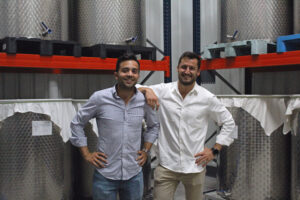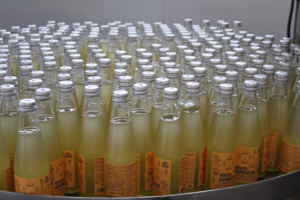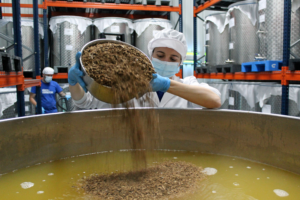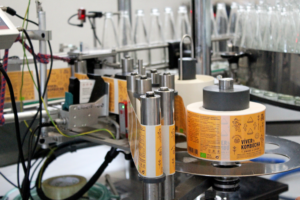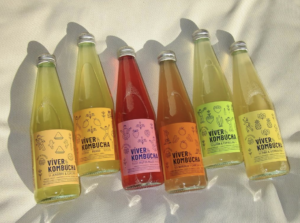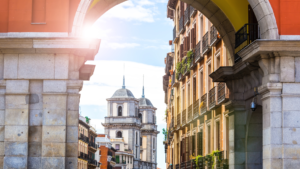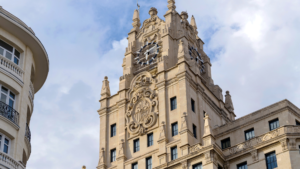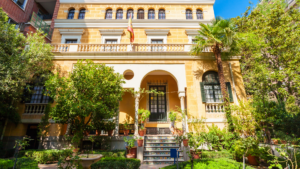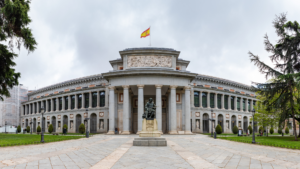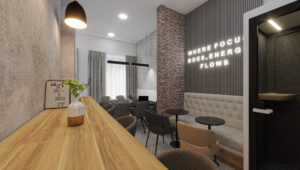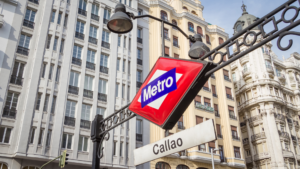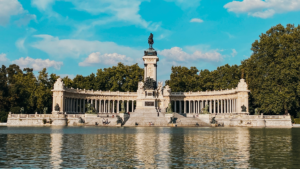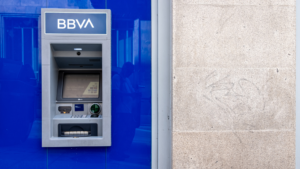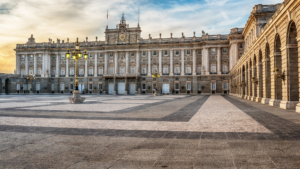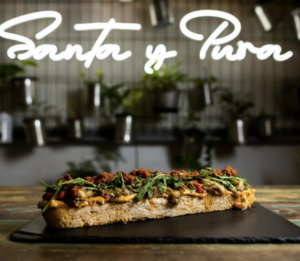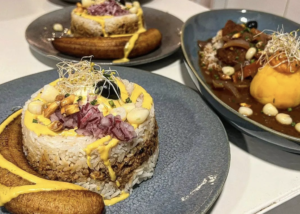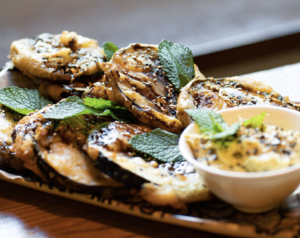Madrid is NOT just any regular city.
The Spanish capital stands as a testament to urban growth and global influence, where its economic and cultural contributions resonate worldwide. The city has skyrocketed in popularity during recent years, quickly becoming a place on everyone’s must-visit list.
When it comes to neighborhoods, Madrid certainly doesn’t disappoint. The city is abundant in diverse neighborhoods that showcase its rich history and electric modern life. Whether you are relocating to Madrid or just passing through, it is important to know a bit about Madrid’s many different neighborhoods and what they each offer.
Let’s dive into the best neighborhoods in Madrid, examining their historical significance, main attractions, and unique contributions to the capital’s culture!
1. Malasaña
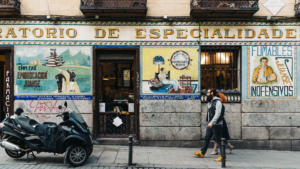
Malasaña, known as Madrid’s “hipster hub”, is where tradition meets trendy. The neighborhood’s history is deeply rooted in the Movida Madrileña, a counter-cultural movement that sprang to life after Franco’s regime. Today, it’s a vibrant area filled with indie boutiques, eclectic bars, and vintage shops. Wander the streets to find colorful street art, pop into funky stores, or enjoy the lively nightlife.
Malasaña is also a place of historical significance, with Plaza del Dos de Mayo commemorating the Spanish resistance against French forces. This square is a gathering place for locals and offers a glimpse into the everyday life of Madrileños. The Malasaña area is widely recognized as one of the best neighborhoods in Madrid, perfect for those looking to experience Madrid’s modern cultural scene while stepping back in time.
- Plaza del Dos de Mayo: a historic plaza at the center of the neighborhood
- Calle de la Palma: for its vibrant street art and indie boutiques
- Conde Duque Cultural Center: for arts and performances
- Mercado de San Ildefonso: for a fun, trendy market experience
- Museo del Romanticismo: for a glimpse into 19th-century Spanish life
PLUS, check out:
2. Chueca

Adjacent to Malasaña, Chueca is renowned as Madrid’s LGBTQ+ friendly quarter, exuding openness and diversity. What was once a rundown area has transformed into one of the most popular and inclusive neighborhoods in Madrid. Chueca is bursting with fashionable boutiques, charming cafes, and some of the city’s best nightlife, particularly during Madrid Pride.
The neighborhood is also home to the Mercado de San Antón, a modern market where visitors can enjoy a variety of tapas and food vendors. Chueca’s lively streets and numerous bars and clubs make it an exciting destination for those looking to experience Madrid’s progressive and energetic side.
- Mercado de San Antón: a modern market with a rooftop terrace
- Plaza de Chueca: the vibrant central square of the neighborhood
- Calle Hortaleza: for shopping and bar hopping
- Calle Pelayo: for its quaint bookshops and cafes
- The annual Madrid Pride Parade: one of the largest LGBTQ+ celebrations in Europe
3. Barrio de las Letras

The Barrio de las Letras, or “Literary Quarter”, is a tribute to Madrid’s Golden Age, where famous writers like Cervantes and Lope de Vega once roamed. This neighborhood is a haven for literature enthusiasts, with its cobblestone streets and historic plaques quoting literary works. It’s a peaceful area ideal for strolling and visiting quaint bookshops and taverns.
The neighborhood transforms at night, offering a wide range of dining and entertainment options. One key highlight is the Ateneo de Madrid, a cultural institution and library that has been a focal point for Spanish intellectual life.
- Calle de Huertas: lined with quotes from famous authors
- Plaza de Santa Ana: for historic cafes and live performances
- Prado Museum: one of the world’s most renowned European art galleries
- Ateneo de Madrid: a historic cultural institution & conference center
- Casa de Lope de Vega: the home of the famous Spanish playwright
4. Salamanca

Salamanca is Madrid’s most upscale neighborhood, and consistently ranks high as one of the best neighborhoods in Madrid. The area is specifically known for its elegant buildings and luxury shopping. The Salamanca district is characterized by its refined classical architecture, chic boutiques, and exclusive restaurants with live music. It’s the place to be for high-end shopping and people-watching in some of Madrid’s most stylish streets. stroll through the beautiful Retiro Park.
Beyond shopping, Salamanca is also rich in culture, housing the National Archaeological Museum and the Lázaro Galdiano Art Museum. This neighborhood offers a quieter side of Madrid, making it perfect for those seeking sophistication and tranquility.
- Calle de Serrano: for luxury shopping
- National Archaeological Museum: for cultural heritage
- Lázaro Galdiano Museum: for private art collections
- Puerta de Alcalá: an iconic neoclassical monument, where you can find countless terraces and clubs to have cocktails and dance until the early hours of the morning.
- Plaza de Colón: for the largest Spanish flag in the world & cultural events
- Retiro Park: To enjoy its 118 hectares of nature right in the center of Madrid
PLUS, check out:
5. La Latina

La Latina is the essence of traditional Madrid, known for its old, windy streets and exciting tapas scene. This neighborhood is bustling with energy, especially on Sundays during the famous El Rastro market. La Latina is the perfect spot to experience Madrid’s renowned tapas culture, with countless bars and restaurants serving up Spanish delicacies.
The area is steeped in history, home to some of Madrid’s oldest churches and buildings, including the Basilica of San Francisco el Grande. La Latina’s charming plazas, such as Plaza de la Cebada and Plaza de la Paja, are delightful spots to relax and soak up the local atmosphere.
- El Rastro Market: Madrid’s largest flea market, repeating every Sunday
- Cava Baja and Cava Alta: for traditional tapas bars
- Basilica of San Francisco el Grande: for its impressive architecture
- Plaza de la Cebada and Plaza de la Paja: for wide-open, historic squares
- Teatro La Latina: for live theater performances
6. Lavapiés
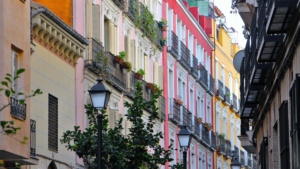
Lavapiés is Madrid’s multicultural heart, a melting pot of cultures and cuisines from around the world. This neighborhood is known for its diverse community, bold street art, and a wide array of international restaurants. Lavapiés offers an alternative Madrid experience, with an edgy vibe and a strong sense of community.
The neighborhood is also home to important cultural institutions like the Reina Sofía Museum and the Tabacalera, a former tobacco factory turned cultural center. Lavapiés’ dynamic and inclusive atmosphere makes it a must-visit for those looking to experience the city’s contemporary vibe and diversity.
- Reina Sofía Museum: for modern art collections.
- Tabacalera: for avant-garde exhibitions and workshops.
- El Rastro Market (extension into Lavapiés): for second hand shopping & unique finds
- Calle Argumosa: for delicious, diverse food
- Lavapiés Street Art: showcases the neighborhood’s culture & art
7. Madrid de los Austrias

Madrid de los Austrias, or Habsburg Madrid, takes you back to the era of the Habsburg dynasty, showcasing the imperial grandeur architecture. The Royal Palace, Almudena Cathedral, and Plaza Mayor are just a few of the historic landmarks found here. Walking through the streets here is like taking a step back in time, with every corner telling a story of Madrid’s royal past.
The area also boasts some of the best traditional Spanish restaurants and taverns in the city. Enjoying a leisurely meal or a quick tapa in one of the many historic plazas is a quintessential Madrid experience.
- Royal Palace of Madrid: the official residence of the Spanish Royal Family
- Plaza Mayor: for historical significance and terraced cafes
- Almudena Cathedral: a blend of Gothic, Romanesque, and Neoclassical styles
- Mercado de San Miguel: for gourmet Spanish products
- Puerta del Sol: the bustling heart of Madrid
8. Argüelles-Moncloa
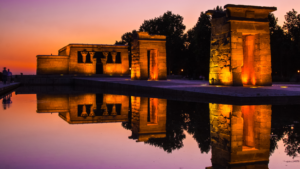
Argüelles-Moncloa is known for its youthful vibe, largely due to its proximity to several universities. This neighborhood is filled with bookstores, cafes, and vintage clothing shops. It’s a place where students, locals, and tourists mingle, creating a lively and dynamic environment.
The neighborhood is also the gateway to some of Madrid’s green spaces, including Parque del Oeste and the Templo de Debod, an ancient Egyptian temple transported to Madrid. Argüelles-Moncloa combines the vibrancy of student life with cultural gems, making it a diverse and exciting area to explore.
- Templo de Debod: an authentic Egyptian temple in Madrid
- Parque del Oeste: for its rose garden and views
- Moncloa Tower: for panoramic views of the city
- Museo de América: showcasing art from the Americas
9. Chamberí
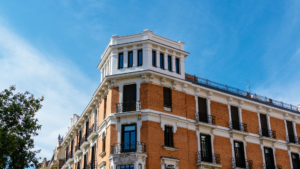
Chamberí represents the authentic Madrid lifestyle, offering a slice of local life away from the tourist hubs. This neighborhood is full of charming architecture, squares filled with terraces where you can enjoy a “caña” (small beer) or a wine. There is the famous “Ponzano” street, the most famous bar street in Madrid. Additionally, there is a selection of theaters and cinemas showing Spanish and international films. Chamberí is great for those who want to experience Madrid like a local, with its traditional markets and family-run restaurants.
The area also houses several lesser-known museums, like the Sorolla Museum, dedicated to the famous Spanish painter. Chamberí is ideal for those seeking a fun, authentic Madrid experience without straying too far from the city center.
- Sorolla Museum: dedicated to the world-famous painter Joaquín Sorolla
- Andén 0: an old metro station turned museum
- Teatros del Canal: for contemporary performing arts
- Mercado de Chamberí: for a traditional food market experience
- Calle de Ponzano: to enjoy amazing cuisine in a lively environment
10. Retiro
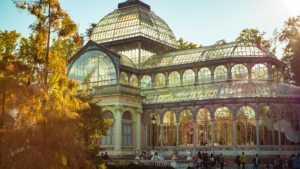
Named after the famous Retiro Park, this neighborhood is one of Madrid’s most elegant districts. The park itself is a magnificent green oasis in the center of the city, offering a peaceful retreat with beautiful gardens, statues, and a charming lake. Retiro is predominantly residential but is known for its upscale boutiques and fine dining.
The area around the park, especially the Paseo del Prado, is home to some of Madrid’s most important cultural institutions, including the Prado Museum and the Thyssen-Bornemisza Museum.
- Retiro Park: Madrid’s green oasis
- Crystal Palace: a beautiful glass and metal structure within the park
- The Fallen Angel Statue: a unique sculpture in the park
- Royal Tapestry Factory: for a historic look at the art of tapestry in Spain
11. Tetuán
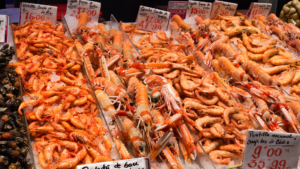
Tetuán offers a glimpse into the more modern and diverse side of Madrid. This neighborhood is very culturally diverse, reflected in its culinary offerings and shops. Originally an area for workers and immigrants, it has evolved into a bustling district with a mix of traditional and international influences.
Tetuán is also becoming known for its emerging art scene, with galleries and cultural spaces popping up on every corner. The area around Calle de Bravo Murillo is particularly cool, offering everything from Moroccan bakeries to Latin American eateries.
- Calle de Bravo Murillo: for diverse and fun shopping
- Palacio de Vistalegre: for sports and entertainment events
- Dehesa de la Villa Park: for nature within the neighborhood
- Mercado Maravillas: one of the largest food markets in Madrid
- Tetuán’s street art: for a cultural urban exploration
PLUS, check out:
12. Atocha
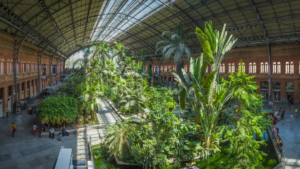
Atocha is most recognized for its bustling train station, serving as a primary hub for local, regional, and international travelers. But there’s much more to Atocha than just transit. The neighborhood is a blend of art, culture, and green spaces, making it an increasingly popular area for both tourists and locals.
Atocha is home to some of Madrid’s most prestigious museums, forming part of the famous ‘Golden Triangle of Art’. The area is also known for its lovely botanical gardens, plus it’s close connection to Retiro Park. Dining in Atocha ranges from traditional Spanish eateries to modern, trendy restaurants, catering to all tastes and preferences.
- Atocha Railway Station: Not just a transport hub, but also a place of architectural beauty and a tropical garden.
- Royal Botanical Garden: A vast collection of plants from around the world, great for an afternoon stroll.
- CaixaForum Madrid: A modern cultural center hosting art exhibitions, film screenings, and concerts.
- Casa Encendida: A dynamic cultural center known for its avant-garde exhibitions, workshops, and performances.
PLUS, check out:
Background on Madrid’s Neighborhoods
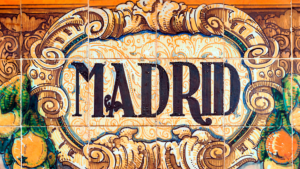
The best neighborhoods in Madrid each tell a different story, reflecting the city’s multifaceted history. From the Habsburg grandeur to the hipster, modern vibe of Malasaña, each area offers a distinct experience.
Madrid’s history stretches back centuries, originally established as a Moorish fort. It became the capital of Spain in the 16th century under King Philip II. Since then, Madrid has grown into a sprawling metropolis, blending historical charm with modern innovation. The diversity of its neighborhoods showcases the city’s evolution from a medieval stronghold to a global city.
Best Neighborhoods in Madrid to Live in
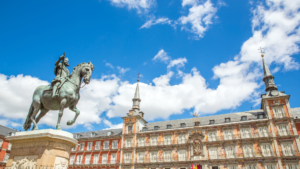
When considering the best neighborhoods in Madrid to live in, factors such as affordability, noise levels, safety, and space come into play.
For those seeking a more tranquil, upscale environment, Salamanca and Retiro offer elegant living spaces near Madrid’s most serene park and high-end shopping streets. For younger residents or those looking for a vibrant nightlife and cultural scene, neighborhoods like Malasaña, La Latina and Chueca might be more appealing.
Families may prefer areas like Chamberí or Argüelles-Moncloa, known for their safety, parks, and family-friendly amenities. Meanwhile, Lavapiés and Tetuán are becoming increasingly popular among those seeking a diverse, dynamic community with more affordable housing options.
Each neighborhood in Madrid offers its own unique advantages, making it important to consider personal preferences and lifestyle when choosing the best place to live.
Photo Credits:
- All photos used through Canva Free Media License




